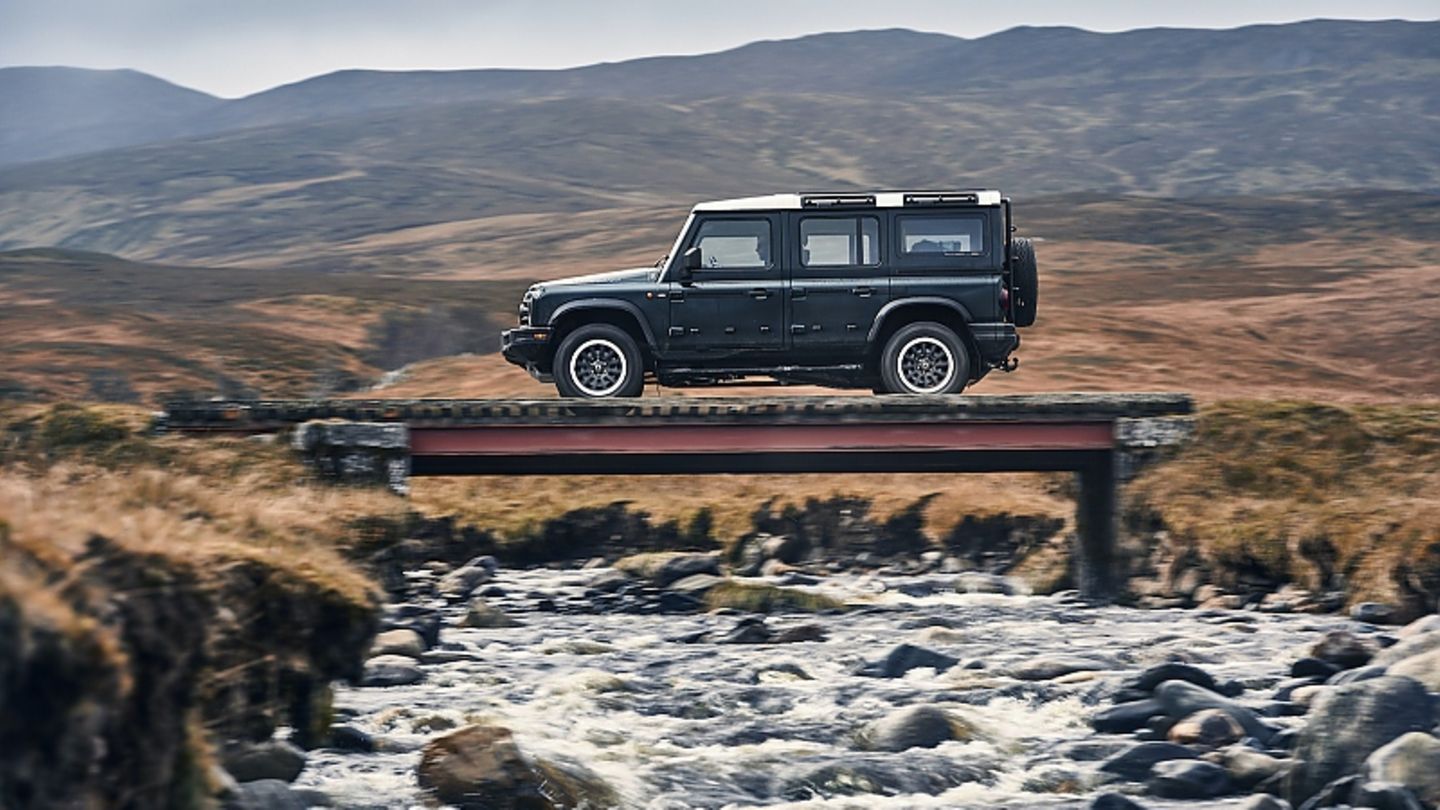The Ineos Grenadier is an old-school off-road vehicle with a BMW engine but no electric drive. Can this go well?
The world is looking forward to many cars. For example, a cheap e-car for the family or an electric high-performance sports car. Some might even be looking for an attractive fuel cell vehicle with a close-meshed supply of hydrogen. Hardly anyone was really waiting for the new Ineos Grenadier. The car looks pretty much like the Land Rover Defender did 50 years ago: angular and rustic, practical in some ways and quirky in others. If you want it to be a bit more high-legged and off-road, then please in a chic SUV with an aerodynamically flattering silhouette.
One man didn’t think so: British multimillionaire Jim Ratcliffe. Because the old Defender was no longer available and Land Rover didn’t want to sell him the discontinued production, Ratcliffe decided to build his own off-roader – the Ineos Grenadier. And because Ratcliffe did not build his fortune with the chemical giant Ineos through wrong decisions, he first carefully examined whether there was a market for it. Lo and behold: it exists. For institutional buyers, but also for private customers.
The drive of the Grenadier is a stunner. No wonder, since it is the combination of a BMW straight-six engine and a ZF eight-speed automatic transmission. Three liters of displacement – as a diesel with 249 hp, as a petrol engine with 286 hp – ensure progress that drivers of classic off-road vehicles never dared to dream of. The German drive unit also does a perfect job in the Ineos. Whether you prefer diesel or petrol is entirely a matter of personal preference. “In Germany, the distribution is currently pretty much 50:50,” confirms Ineos Europe boss Klaus Hartmann. The substructure is appropriately rustic. It comes largely from Magna Steyr and thus from the very people who once taught the Mercedes G how to climb. And because good climbing properties were at the top of Ineos’ to-do list, the Grenadier doesn’t show any weaknesses. Thanks to spring travel of almost 60 centimetres, its rigid axles allow for wild entanglements. Ground clearance, water resistance and whatever else – the off-roader built in the former Smart factory in Hambach achieves top marks everywhere. Three differential locks, a reduction gear and even more nice extras catapult it to the top of the wish lists of adventurers and hermits.
All of this has its price. The Grenadier costs a good 75,000 euros as a car. If you opt for the somewhat more spartan variant with commercial vehicle registration, you save around 8,000 euros. That’s all a lot of money, but it has to be seen in relation to the only two competitions: The Jeep Wrangler now costs 82,000 euros, the Mercedes G a good 118,000 euros and is also practically sold out. “That’s why our dealer network in Germany also includes Mercedes dealerships that want to offer their customers cheaper alternatives to the G-Class that are available more quickly,” explains Hartmann. Other partners are BMW dealers, which is plausible given the powertrain, others still carry Land Rover on the side. But with the high price of off-road technology, it’s not just about the money, it’s also about the weight. With an unladen weight of 2.6 tons, the Grenadier is a beast. It also cannot hide the fact that with a payload of around 800 kilograms it sets a top value. On the one hand, the weight promotes the currently unacceptably high consumption value of almost 15 liters per 100 kilometers and, on the other hand, it is also the KO criterion for a potential electric version. “With this weight, diesel and petrol are the only right answers,” explains sales manager Marc Tennant. In the meantime, Ineos has also announced that it will temporarily put the initially targeted fuel cell drive on hold. “In this point we see the lack of a political framework in Europe,” says Tennant with regret.
The consistent focus on above-average off-road capabilities also reveals problems in other areas. For example with the steering. Because the all-terrain front rigid axle requires a recirculating ball steering system typical of a commercial vehicle instead of the usual rack and pinion steering, the steering wheel feels extremely spongy. You crank, and only at some point does the grenadier agree to follow the request. “We are in contact with our supplier, because of course we know that there is a better way,” says Ineos COO Hans-Peter Pessler, who, as a former Magna Steyer man, knows only too well what he is talking about.
Apart from that, the Grenadier surprises with its solid driving comfort. In this point he clearly beats his competitor Wrangler. You glide calmly along on asphalt, even the deep-treaded AT tires are acoustically restrained. One could almost believe that one is sitting in an SUV. The really cool switches on the center console and headliner, which were copied from airplane cockpits, can easily pass as a lifestyle statement. The omission of a speedometer behind the steering wheel is a nice gag that definitely works. It remains to be seen whether the long list of missing assistance systems is so easy to get over. In view of the desired off-road capabilities, this omission is at least honest.
Source: Stern
I’m a recent graduate of the University of Missouri with a degree in journalism. I started working as a news reporter for 24 Hours World about two years ago, and I’ve been writing articles ever since. My main focus is automotive news, but I’ve also written about politics, lifestyle, and entertainment.




